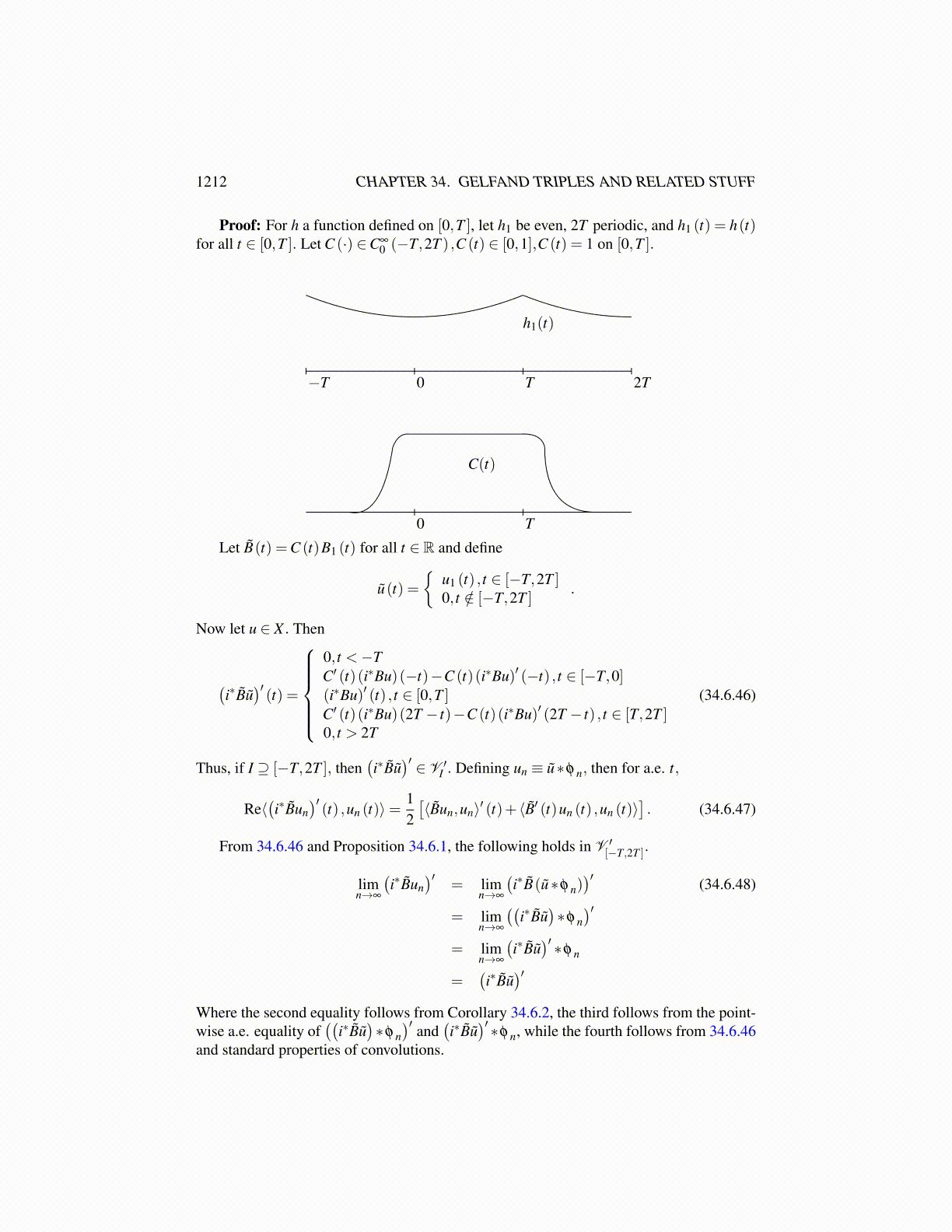
1212 CHAPTER 34. GELFAND TRIPLES AND RELATED STUFF
Proof: For h a function defined on [0,T ], let h1 be even, 2T periodic, and h1 (t) = h(t)for all t ∈ [0,T ]. Let C (·) ∈C∞
0 (−T,2T ) ,C (t) ∈ [0,1],C (t) = 1 on [0,T ].
0 T 2T−T
h1(t)
0 T
C(t)
Let B̃(t) =C (t)B1 (t) for all t ∈ R and define
ũ(t) ={
u1 (t) , t ∈ [−T,2T ]0, t /∈ [−T,2T ] .
Now let u ∈ X . Then
(i∗B̃ũ
)′(t) =
0, t <−TC′ (t)(i∗Bu)(−t)−C (t)(i∗Bu)′ (−t) , t ∈ [−T,0](i∗Bu)′ (t) , t ∈ [0,T ]C′ (t)(i∗Bu)(2T − t)−C (t)(i∗Bu)′ (2T − t) , t ∈ [T,2T ]0, t > 2T
(34.6.46)
Thus, if I ⊇ [−T,2T ], then(i∗B̃ũ
)′ ∈ V ′I . Defining un ≡ ũ∗φ n, then for a.e. t,
Re⟨(i∗B̃un
)′(t) ,un (t)⟩=
12[⟨B̃un,un⟩′ (t)+ ⟨B̃′ (t)un (t) ,un (t)⟩
]. (34.6.47)
From 34.6.46 and Proposition 34.6.1, the following holds in V ′[−T,2T ].
limn→∞
(i∗B̃un
)′= lim
n→∞
(i∗B̃(ũ∗φ n)
)′ (34.6.48)
= limn→∞
((i∗B̃ũ
)∗φ n
)′= lim
n→∞
(i∗B̃ũ
)′ ∗φ n
=(i∗B̃ũ
)′Where the second equality follows from Corollary 34.6.2, the third follows from the point-wise a.e. equality of
((i∗B̃ũ
)∗φ n
)′ and(i∗B̃ũ
)′ ∗φ n, while the fourth follows from 34.6.46and standard properties of convolutions.